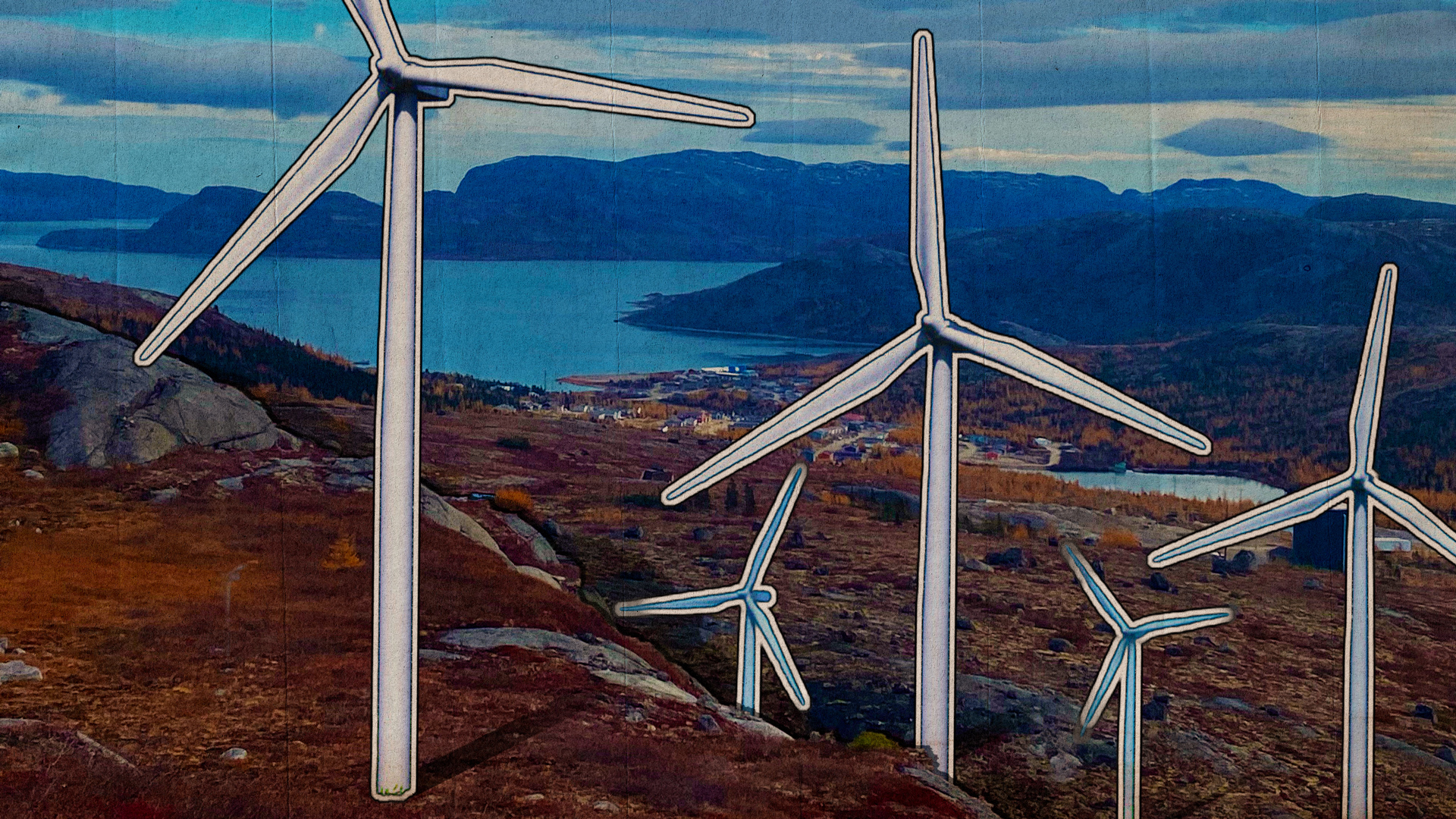By Bydarius Snieckus Cloe Logan
Cutting down on diesel will mean fewer emissions and cheaper energy bills — and better health outcomes for the residents of Nain.
“We, as people from the North, are the filter. We’re experiencing different types of health issues coming from fumes … coming from fossil fuels,” said Lampe, who is a cancer survivor. Diesel exhaust is categorized as a carcinogen by the World Health Organization.
The microgrid project could lead to something farther reaching, said Hewlett. Once built, it could serve as a blueprint to get the 22 other diesel-powered communities in Newfoundland and Labrador off the fossil fuel. Across Canada, there are more than 240 diesel-reliant remote communities. Seventy per cent of those are Indigenous communities. What works for one community won’t work for all, but Hewlett says much of the planning around interconnecting with the utility and the agreement they’ve come to regarding selling the energy generated from the wind farm could be applied to other communities, especially in Nunatsiavut.
The reason Nain is the first community in Nunatsiavut to take on a renewables project goes back to wind studies Newfoundland and Labrador Hydro completed in the early 2000s, which sat unused for years. Eventually, the Nunatsiavut government created its own energy department and energy security plan, which included community assessments, to see which renewable projects could work in specific communities.
“Nain had the best [wind] resource from the data that was collected, so we started that as our potential first demonstration project and ran with it from there,” he said. They then partnered with an engineering company to dig deeper into the feasibility of a wind project, and what would work for Nain, which has a population of about 1,200. The energy generated from the project will be sold back to Newfoundland and Labrador Hydro, the Crown corporation that owns the diesel-power plant in Nain. The income generated will be put into a trust which the Nunatsiavut government will own and “find ways to give it back to the beneficiaries in some type of programming, rebates and things like that,” said Hewlett.
“Wind technology is not new, but this is our first project, which would be a demonstration project,” he said. “We hope to replicate it in other communities, whether it’s another wind project or solar.”
Finding funding
The importance of getting off diesel has been underscored as a priority by the communities that rely on it, as well as by environmental groups and both levels of government. However, projects that get remote communities off diesel “face tremendous challenges,” explained Rosa Brown, a senior analyst with the Renewables in Remote Communities program at the Pembina Institute.
She highlights wins like the Kluane First Nation’s wind project and Nain’s project moving forward, but notes the latter has been in the works for about a decade. Challenges largely relate to funding, said Brown, which needs to not just address building the project, but making sure communities have resources to pay staff and hire the technical and legal support necessary for resource projects.
Along with funding, the logistics of building in remote areas also holds communities back. Along with financial and capacity limitations, Natural Resources Canada noted that “extreme weather conditions in the North and limited road access can increase costs and complications” of projects that would transition communities off diesel. Hewlett explained that the turbines for the Nain project were constructed in Germany, shipped to New Brunswick, and then barged up to Nain, where roads have to be reconfigured to move the materials.
“So the logistical piece of it is a massive added cost,” he said.
There has been federal funding put forward, which builds on previous prime minister Justin Trudeau’s promise to get diesel-reliant communities off the fossil fuel by 2030. In 2020, Canada’s Strengthened Climate Plan announced “$300 million over five years to advance the government’s commitment to ensure rural, remote and Indigenous communities that currently rely on diesel have the opportunity to be powered by clean, reliable energy by 2030.”
But Brown says it will take funding from provincial and territorial governments to make the transition off diesel possible.
“A real highlight of this story is the Newfoundland and Labrador government stepping up with that significant funding. That’s what makes the provinces different from the territories. The Newfoundland and Labrador government, though it is still a small jurisdiction, has a little bit more economic opportunity to support projects like this,” she said.
“Which would be harder for the territorial governments. Harder, slash impossible, for the territorial governments to come up with that kind of money.”
